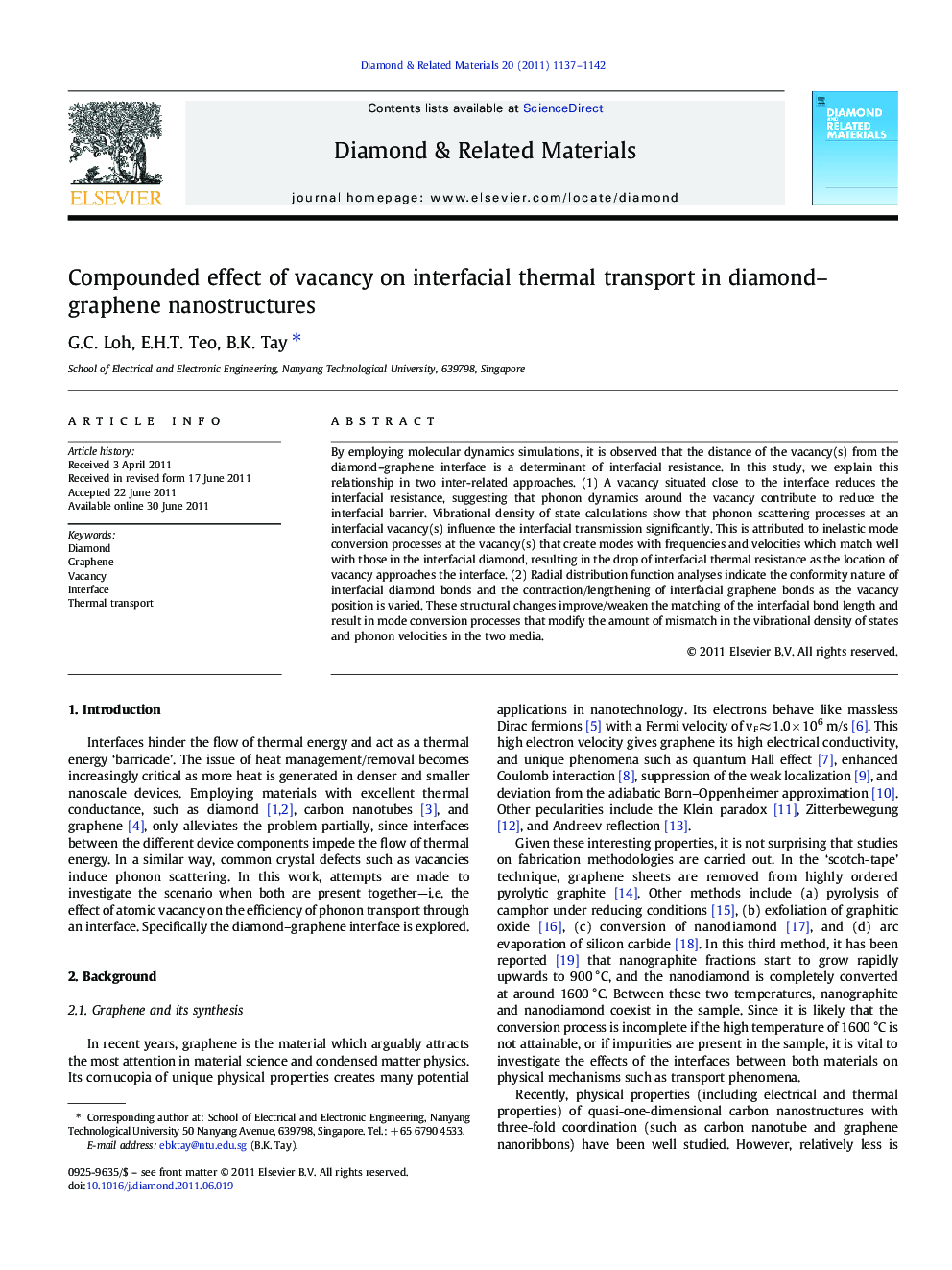| Article ID | Journal | Published Year | Pages | File Type |
|---|---|---|---|---|
| 701869 | Diamond and Related Materials | 2011 | 6 Pages |
By employing molecular dynamics simulations, it is observed that the distance of the vacancy(s) from the diamond–graphene interface is a determinant of interfacial resistance. In this study, we explain this relationship in two inter-related approaches. (1) A vacancy situated close to the interface reduces the interfacial resistance, suggesting that phonon dynamics around the vacancy contribute to reduce the interfacial barrier. Vibrational density of state calculations show that phonon scattering processes at an interfacial vacancy(s) influence the interfacial transmission significantly. This is attributed to inelastic mode conversion processes at the vacancy(s) that create modes with frequencies and velocities which match well with those in the interfacial diamond, resulting in the drop of interfacial thermal resistance as the location of vacancy approaches the interface. (2) Radial distribution function analyses indicate the conformity nature of interfacial diamond bonds and the contraction/lengthening of interfacial graphene bonds as the vacancy position is varied. These structural changes improve/weaken the matching of the interfacial bond length and result in mode conversion processes that modify the amount of mismatch in the vibrational density of states and phonon velocities in the two media.
► The distance of the vacancy(s) from the diamond–graphene interface is a determinant of interfacial resistance. ► Diamond bonds at diamond–graphene interfaces conform to the mean bond length of graphene. ► As the vacancy position is varied, the graphene bonds at the interfaces can either contract or lengthen. ► The structural changes improve/weaken the matching of the interfacial bond length.
